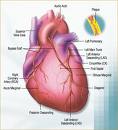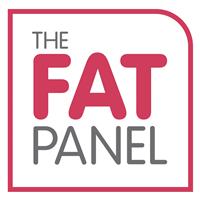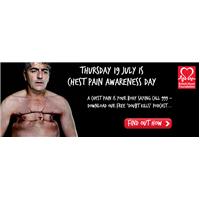
London: The average person’s heart is five years older than their chronological age, according to a new study.
Based on an analysis of heart health checks conducted at branches of Lloydspharmacy, and using a protocol developed by Unilever and Boston University, the study shows that people’s hearts are aging faster than they should.
The research is based on a sample of more than 3000 tests conducted on adults less than 60 years old. The study should be a real wake up call for smokers in particular. The findings reveal that puffing away results in a heart age which is a full 14 years older than smokers actual age. The figure for non smoking men is 4 years. Women, however, fare better. The average Heart Age of non-smokers in this age group is the same as their chronological age.
Recently it emerged that while death rates from coronary heart disease are falling among the old they are levelling off or rising among people aged 35 to 54, suggesting that there is a middle aged heart disease bulge caused by over-indulgence and sedentary lifestyles.
The findings of the research coincide with the launch of a tie-up between Lloydspharmacy and Flora pro.activ. The initiative was launched by Gloria Hunniford who has been working with Flora pro.activ on a number of heart health campaigns.
Heart health is an issue that Gloria feels passionate about. She lost her first husband, Don Keating, as a result of an undetected heart condition and then her husband Stephen Way suffered a heart attack just after they got married.
Gloria herself had raised cholesterol (6.35mmol/l), and these experiences alerted her to what she describes as, the silent killer cholesterol, and made her realise that she needed to take serious steps to protect her own heart.
As part of the link between Lloydspharmacy and Flora pro.activ, people can get a free Cholesterol test and Heart Check worth £15 at more than 600 branches of Lloydspharmacy nationwide in return for two proofs of purchase of any Flora pro.activ products.
The Lloydspharmacy Cholesterol and Heart Check is a 10-15 minute consultation involving, amongst other things, cholesterol and blood pressure tests and a lifestyle assessment. Based on these results a percentage risk score of developing heart disease over the next ten years is estimated.
Heart Age
Heart age is calculated using a range of factors including blood pressure,
blood cholesterol, diet and lifestyle. The Heart Age Calculator was
developed through collaboration between Unilever (the parent company of
Flora) and the Boston University Statistics and Consulting Unit, the department that was involved in identifying the factors that increase peoples risk of heart disease in the world-famous Framingham Heart Study.
About Lloydspharmacy
Lloydspharmacy has 1,700 pharmacies across the country. These are based predominantly in community and health centre locations. The company employs over 16,000 staff, of which 80 per cent are women and dispenses 120 million prescription items annually. The pharmacies have over two million visits per week by customers who are also predominantly women.
Lloydspharmacy is the trading name of Lloydspharmacy Ltd, a wholly owned subsidiary of Celesio AG based in Stuttgart. Celesio is the leading pharmaceutical distribution company in Europe and is represented in 15 countries. With its three divisions, Celesio Wholesale, Celesio Pharmacies and Celesio Solutions, the group covers the entire scope of pharmaceutical trade and pharmaceutical-related services.
Lloydspharmacy which is a community pharmacy has primary care at the heart of its business. This is why has launched a range of products aimed at community health such as affordable blood pressure monitors, Solar Safe products and is a supporter of NHS initiatives such as NHS Choices by providing terminals in-store for patient information.









